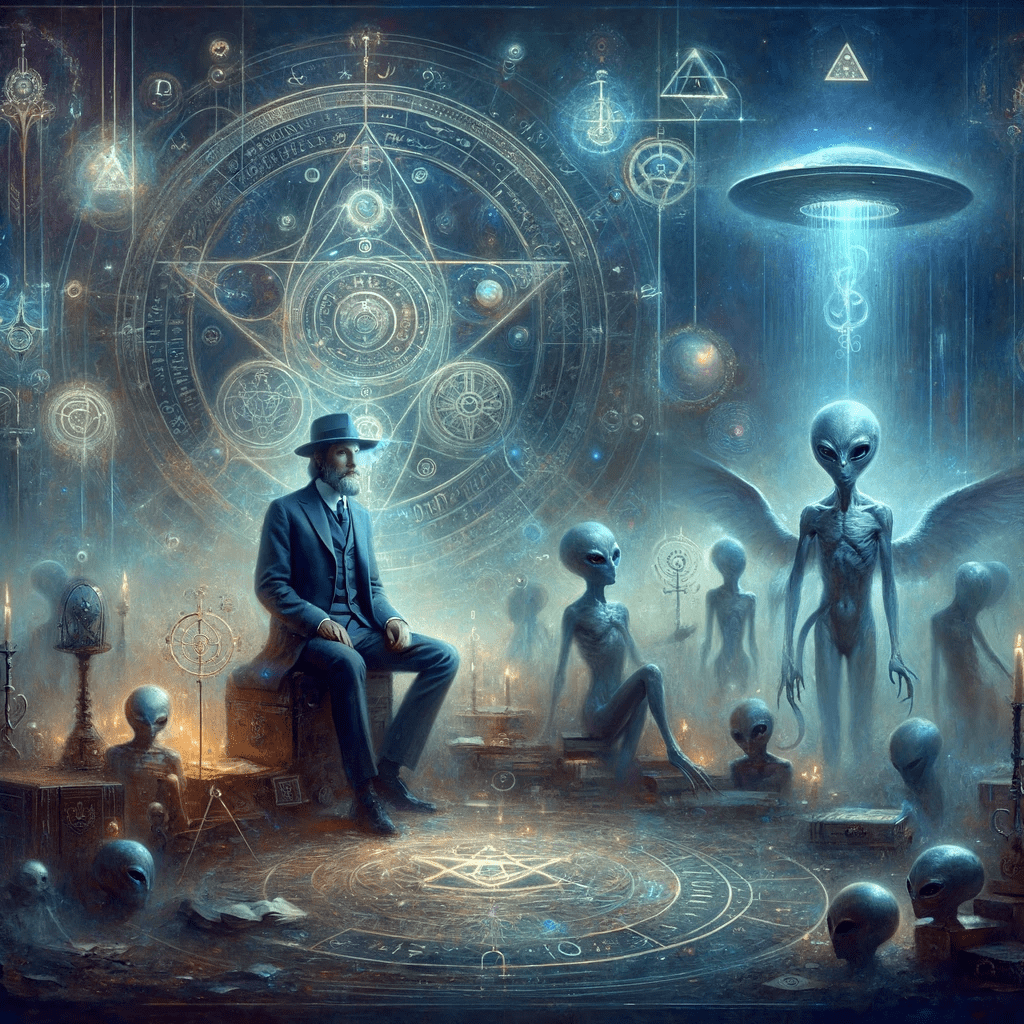Aleister Crowley

Aleister Crowley, born Edward Alexander Crowley on October 12, 1875, in Royal Leamington Spa, England, is a figure who has captivated public imagination for over a century. His life was full of occultism, writing, mountaineering, and profound influence on Western esotericism.
Crowley’s education was rooted in Christian fundamentalism, owing to his upbringing in a Plymouth Brethren household. However, he quickly developed an aversion to Christianity. His formal education began at private schools such as Malvern College, Tonbridge School, and Eastbourne College. Crowley’s academic journey continued at Trinity College, Cambridge, where he studied from 1895 to 1898 but left without obtaining a degree. At Cambridge, he distinguished himself in chess and poetry, while his inclination towards mountaineering and exploration of esoteric and occult practices began to take shape.
Professionally, Crowley did not follow a conventional path. His early inheritance allowed him the freedom to pursue his interests without the constraints of a regular occupation. He was primarily known as an occultist, poet, novelist, and mountaineer. Crowley’s literary output was prolific, with his first book of poetry being published in 1898, followed by numerous others throughout his life.
Crowley’s connection to Unidentified Flying Objects (UFOs) is rooted in his occult practices. In 1917, during a series of rituals known as the Amalantrah Workings, Crowley claimed to have contacted a preternatural entity named Lam, which he described as similar in appearance to what we now refer to as a Grey alien. Crowley believed that these workings allowed humans to contact beings from outer space and across dimensions.
Crowley founded the religion of Thelema, which was based on the principles outlined in “The Book of the Law,” a text he claimed was dictated to him by the entity Aiwass in Egypt in 1904. Crowley was a member of the Hermetic Order of the Golden Dawn, an influential organization in the Western esoteric tradition, where he was trained in ceremonial magic.
Crowley’s practice of magic and his philosophy were centered around the belief in achieving higher states of consciousness and spiritual enlightenment. He was deeply involved in various forms of ritual magic, including sexual magic, which he believed could be used to commune with higher powers and achieve spiritual transcendence.
His other works, including notable ones like “The Book of Thoth,” and “The Diary of a Drug Fiend,” reflect his deep engagement with occultism and his own philosophy of Thelema. These works continue to be studied for their esoteric content and literary value.
The Lam Entity
The Lam entity, as described by Crowley, bears a striking resemblance to modern depictions of Grey aliens. It’s described as having large, dark eyes, a small or absent nose, and a large head, correlating with common alien descriptions in later UFO reports. The entity’s messages and Crowley’s interpretations are deeply tied to his Thelemic philosophy and occult practices.
Crowley’s interactions with Lam occurred during a series of magical workings known as the Amalantrah Workings, conducted in 1918 in New York City. These workings involved complex rituals and were believed by Crowley to create a portal between the stars, allowing entities like Lam to enter our physical universe.
The Lam entity is considered not just an individual being but rather a class of entity in occult terms. Invoking Lam is thought to involve reaching out to an entity of this type rather than a specific being. In occult practices, particularly those following the lines of the Ordo Templi Orientis (O.T.O.), the invocation of Lam entities is performed through magical portals created intentionally in time and space. These practices aim to bring such entities into physical manifestation on Earth, although the reasons for doing so are not always explicitly stated.
Lam is depicted as Beings with large, dark eyes and an enlarged head, features that closely align with contemporary descriptions of Grey aliens. This similarity has led to speculation and theories within both occult and UFO circles about the nature of Lam and its connection to extraterrestrial beings.
Crowley’s interpretation of Lam and the use of the entity’s symbolism in his work is deeply embedded in his broader Thelemic philosophy. The Thelema belief system emphasizes individual spiritual growth and the pursuit of one’s True Will. In this context, interactions with entities like Lam are seen as part of the “Great Work” of spiritual development and exploration.
The interest in Lam has persisted beyond Crowley’s time, with various occultists and practitioners exploring the possibility of contacting and working with Lam or similar entities. These endeavors often involve complex ritualistic practices and meditation, aiming to establish a rapport with the consciousness represented by Lam.
Aleister Crowley’s influence on various cultural movements, particularly in the realm of music, is substantial and multifaceted. His intriguing persona and esoteric teachings have captivated numerous artists and musicians, leading to his mention in songs, the incorporation of his philosophies into music, and even influencing the lifestyles of some prominent figures in the music industry.
Crowley’s appeal to these artists lies in his advocacy for self-liberation, his controversial and unorthodox practices, and his exploration of themes like freedom, self-actualization, and the darker aspects of human nature. His philosophy and lifestyle, intertwining themes of magic, sexuality, and individualism, resonate with the essence of rock and roll and the rebellion it often represents. Crowley’s influence in music culture is a reflection of his complex legacy as an occultist and a figure who challenged the norms of his time.

